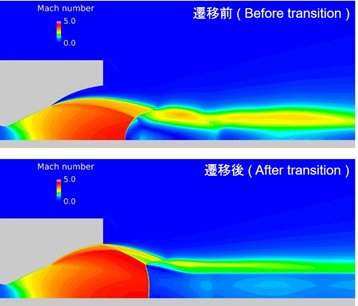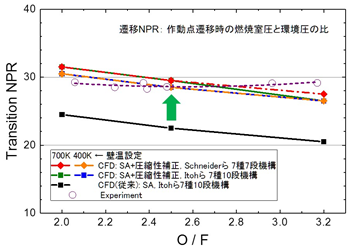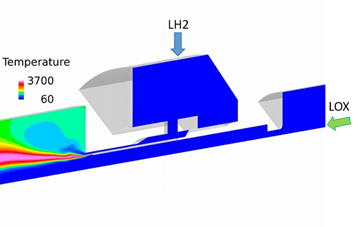Research for Innovation of Rocket Propulsion Engine
JAXA Supercomputer System Annual Report April 2016-March 2017
Report Number: R16E0078
- Responsible Representative: Koichi Okita(Research and Development Directorate, Unit IV)
- Contact Information: Masahiro Takahashi(takahashi.masahiro@jaxa.jp)
- Members: Masahiro Takahashi, Toshiya Kimura, Kosei Goto, Atsushi Osada, Tomoyuki Tanaka, Masaaki Fukui, Toshihiko Munakata, Masaharu Takahashi
- Subject Category: Space(Rocket engine)
Abstract
We are trying to solve key technical issues commonly required for the development of the rocket engines used for the H3 rocket and those for future space transportation systems. This research activities will contribute to the realization of more reliable rocket engine than ever.
Goal
To make the rocket engines used for the H3 rocket and those for future first-stage reusable space transportation systems more reliable, we will advance the design technology and propose new technologies.
Objective
For selected key technologies commonly required for the development of the rocket engines used for the H3 rocket and those for future space transportation systems (securing turbo-pump design margin, solutions of the propulsion system coupled vibration and the combustion instability, development of new materials), we will investigate the phenomena and advance the test and evaluation capabilities and the design technologies.
References and Links
N/A
Use of the Supercomputer
A dual-bell nozzle is one of the promising technologies to increase specific impulse of rocket engines. One of the technical issues for design of the dual-bell nozzle is to establish prediction method of the operation-mode transition from the low-altitude mode to the high-altitude mode. To obtain the CFD-based prediction capability, CFD corresponding to the combustion tests using asub-scaled dual-bell nozzle model was conducted and its accuracy was evaluated by comparison with the experimental results.
CFD was conducted for single-element injector tests to investigate the influence of the flow disturbance generated in the cryogenic propellant supply section upstream of the injector exit on the combustion characteristics in the combustor.
Necessity of the Supercomputer
Combustion tests of full-scaled dual-bell nozzles are not feasible from the viewpoint of the test facility capability and the cost. It is also difficult to predict the mode transition condition by a simple analytic model since large-scale flow separation and strong shock waves exist. Therefore, the duplication of the nozzle flow by CFD using the supercomputer is essential for the mode-transition prediction.
In the single-element injector test, the measurable data are limited because of the space limitation for the sensor installation and the severe flow condition. Duplication of the flowfield by CFD using thesupercomputer is essential to understand the detail of the phenomena.
Achievements of the Year
CFD using simplified reaction mechanism was carried out for the LOX-CH4 combustion tests of the sub-scaled dual-bell nozzle, which have been conducted under the DLR-JAXA research collaboration, and the predicted transition nozzle-pressure-ratio(NPR) were validated by comparison with the experimental results. At the early stage of the study, the agreement was not good. However, the good agreement came to be obtained at the representative condition by applying the compressibility correction to the turbulence model. The variation trend of the transition NPR with respect to the variation of the oxidizer and fuel mixture ratio (O/F) was slightly different between the CFD and the experiment so that the sensitivities of both the reaction mechanism and the wall temperature on the predicted transition NPR was studied and the agreement was improved to some extent.(See Figs.1 and 2)
CFD corresponding to a single-element injector test was conducted to investigate the influence of the flow disturbance generated in the cryogenic propellant flow inside the upstream part of the fuel injector exit on the combustion characteristics in the combustor. However, severe numerical instability occurred in the region where the unburned cryogenic propellant and the high-temperature combustion gas were in contact and it became difficult to continue the computation. We investigated the cause and examined ways to improve. (See Fig.3 )
Publications
Presentations
1) Takahashi et.al., 'Prediction of operation mode transition in combustion tests of a sub-scaled dual-bell nozzle model,' ANSS 2016, JAXA-SP-16-007 (In Japanese).
2) Tomita et.al., 'Influence of Combustion gas to an Operation-mode Transition of Dual-bell nozzles,' The 57th Japanese Conference on Propulsion and Power (In Japanese).
Computational Information
Dual-bell
- Parallelization Methods: Thread Parallelization
- Process Parallelization Methods: n/a
- Thread Parallelization Methods: OpenMP
- Number of Processes: 1
- Number of Threads per Process: 16
- Number of Nodes Used: 1
- Elapsed Time per Case (Hours): 100
- Number of Cases: 30
Injector
- Parallelization Methods: Process Parallelization
- Process Parallelization Methods: MPI
- Thread Parallelization Methods: n/a
- Number of Processes: 3200
- Number of Threads per Process: 1
- Number of Nodes Used: 100
- Elapsed Time per Case (Hours): 200
- Number of Cases: 2
Resources Used
Total Amount of Virtual Cost(Yen): 3,963,250
Breakdown List by Resources
| System Name | Amount of Core Time(core x hours) | Virtual Cost(Yen) |
|---|---|---|
| SORA-MA | 2,882,434.73 | 3,848,342 |
| SORA-PP | 64.79 | 553 |
| SORA-LM | 0.00 | 0 |
| SORA-TPP | 0.00 | 0 |
| File System Name | Storage assigned(GiB) | Virtual Cost(Yen) |
|---|---|---|
| /home | 90.08 | 849 |
| /data | 2,614.34 | 24,661 |
| /ltmp | 9,114.59 | 85,978 |
| Archiving System Name | Storage used(TiB) | Virtual Cost(Yen) |
|---|---|---|
| J-SPACE | 0.93 | 2,865 |
Note: Virtual Cost=amount of cost, using the unit price list of JAXA Facility Utilization program(2016)
JAXA Supercomputer System Annual Report April 2016-March 2017





